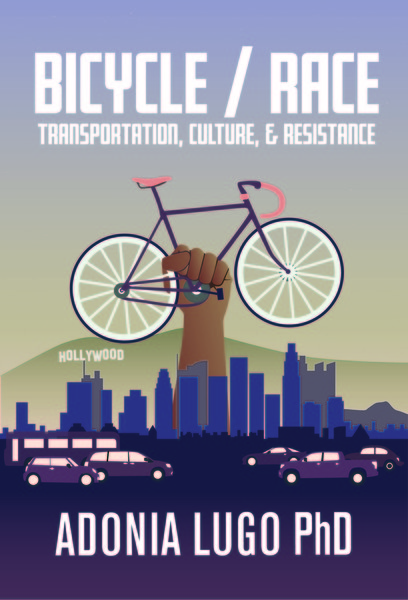The Los Angeles Public Library has a collection of photos where you can immerse yourself in Los Angeles history. I've spent many hours looking at pictures of Bunker Hill. The collection creates an odd juxtaposition of dilapidated houses slated for destruction, which to my eyes look like treasures, with horn-rim-spectacled men in suits hovering over models of the sanitized landscapes the Community Redevelopment Association imagined would replace the slums.
The library's collection includes a similar juxtaposition through photos of Chavez Ravine, the neighborhood near Elysian Park that was buried under Dodger Stadium. Search for "Chavez Ravine" in the collection and you will see a woman, Aurora Vargas, being dragged away from her home by four policemen. A little girl (her daughter? sister? niece?) stands behind her, crying. Their family was the last remaining after the city started evicting homeowners there in the early 1950s. The city claimed that the neighborhood would be redeveloped into
affordable housing, but then they pretty much gave the land away to
Dodgers owner Walter O'Malley. Another photo is captioned "Draftsmen through, bring on the shovels." In yet another, a man who looks like a well-fed character actor in a Coen Brothers movie holds up a shovel marked with the date September 17, 1959.
Urban redevelopment did not just affect communities of color. My mother grew up in a house in a white, middle class subdivision in San Bernardino that was claimed by eminent domain and torn down for a freeway expansion many years ago. But the effects that dispossession justified by racism and classism had on our built environments should be clear. This legacy might come to mind when people see bike lanes in neighborhoods impacted by redevelopment, neighborhoods that either suffered the ill effects of things like highways and demolitions, or were considered so undesirable that they were simply ignored by cities for decades. Maybe the bike lane markings seem to trace a thread of power, connecting wealthier, whiter communities with the city's development agenda, and threatening communities of color with displacement yet again.
I want to empower communities to embrace bicycling as a healthy form of transportation that re-connects us with our environments. I'm not very interested in advocating for bike infrastructure that increases property values for developers benefiting from public subsidies. I think urban redevelopment was a huge mistake, not something we should resurrect under the guise of terms like "green," "transit-oriented development," "walkability," and "bike friendly." The bicycle is much more than a toy of privileged people. However,
working as we do in landscapes shaped by long histories of segregation
and racism, that is a characterization that bike advocates encounter. Historical collections like this one at LAPL offer us a way to understand how, for so long, we've operated in the same cities, the same spaces, with such different ideas about what should be happening in them. This is a crucial step in building equitable future cities.

